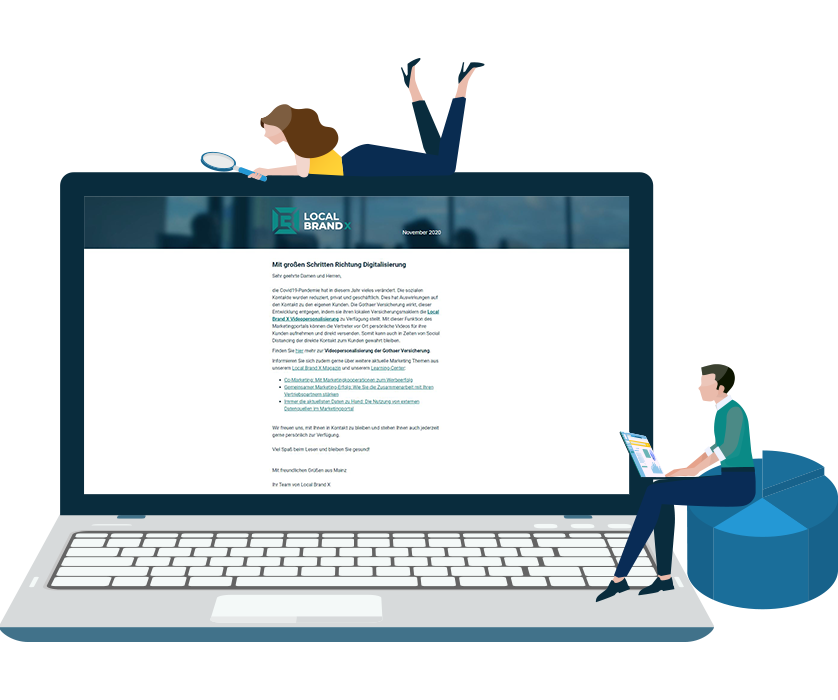Bleiben Sie auf dem Laufenden!
Melden Sie sich für unseren monatlichen Newsletter an und verpassen Sie keine Neuigkeiten zu aktuellen Marketing-Themen mehr.

With the corona pandemic and social distancing at the latest, more and more companies have started to let their employees work from home. Whether at the desk, on the couch, in the café around the corner or maybe even from the beach. The modern working world usually no longer consists of five days nine to five in an office. Creative professions and IT in particular were pioneers in the remote working movement. Developers, designers and graphic artists often work flexibly and independently from any location. All you need is a laptop and a stable internet connection. But traditional companies and many marketing departments have also learned to deal with home offices and flexible work models in the last year and to find new digital ways to unite their employees. Anyone who is currently looking around on application portals will find more and more remote work offers. It is now clear that these location-independent forms of work will become more and more important in the future.
Some studies already show the positive effects on the well-being of employees and employees if they can choose their workplace flexibly and adapt it to their private life. Working from home eliminates travel times and agonizing traffic jams during rush hour and you can start your leisure time activities right after work. This leaves more of the day and the time gained can be filled with family or hobbies. This usually strengthens the well-being and motivation that employees bring with them. Productivity can also be increased due to the lack of distractions (for example from an open-plan office).
Not only the employees benefit from these flexible ways of working. Remote working also offers clear advantages for companies. Medium-sized and smaller companies in particular have often found it difficult to assert themselves in recruiting against large competitors at the location and suffered from an increasing shortage of skilled workers. With the ability to work remotely, employees from different cities and even countries can be hired. In this way, possible disadvantages of the location are reduced, the number of applicants can be increased significantly and it also offers the possibility of establishing diverse international teams. In addition, there can also be a financial advantage in that less space is required in office space and thus money is saved on rent and equipment.
Of course, working from any location and working together in decentralized teams not only brings advantages, but also new challenges. Employees need particularly good self and time management in order to get into work mode and work productively even without the work environment and colleagues on site. The spectrum ranges from people who cannot motivate themselves at home to employees who do not stop working and no longer take break times. In addition, there is possible isolation, as there is no personal contact with colleagues. This can be counteracted with regular virtual meetings, coffee breaks via Skype or digital team events. However, personal contact will never be completely replaced. Due to these missing points of contact, the sense of belonging and the sense of responsibility towards the company can also suffer. For executives in particular, this means that they have to adapt their management style to the digital forms of work and attach importance to the fact that every employee is integrated and informed.
Even if more and more people are currently working from home and companies are slowly opening up to this work concept, there are still many conservative companies that are anchored in their old structures. Here, the employees are usually not shown the trust they need to work from home. In the long term, however, the world of work will develop in the direction of flexible work models in many areas due to advancing digitization. Here it is usually no longer the time at work that counts, but the tasks completed and the end result. To implement this, however, companies need some technical requirements, such as a uniform messaging system and / or a collaboration tool that allows employees to access the content and information. With the right prerequisites and the necessary trust, you too can offer your employees an ideal work model.

Head of Customer Success, Authorized Signatory

Melden Sie sich für unseren monatlichen Newsletter an und verpassen Sie keine Neuigkeiten zu aktuellen Marketing-Themen mehr.